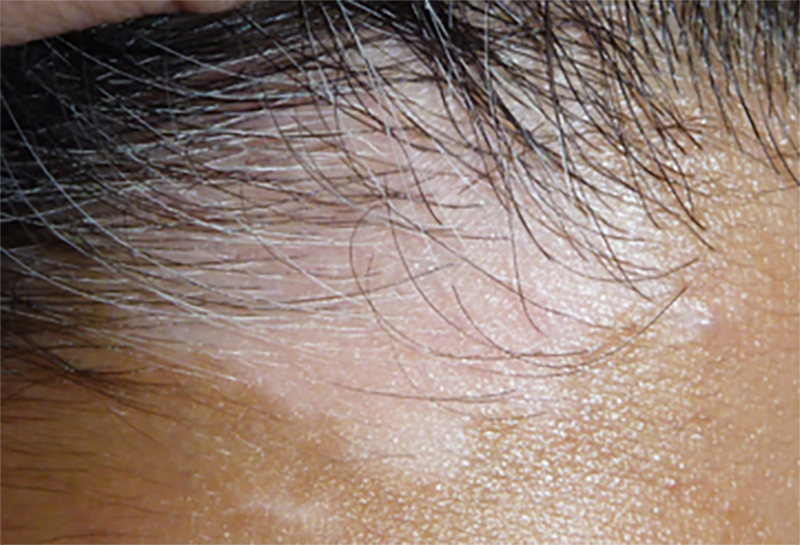Vitiligo’s emotional impact

Vitiligo in the young
August 8, 2017
What is Vitiligo?
August 10, 2017Vitiligo is the most common pigmentary disorder worldwide affecting up to 2% of the world’s population, affecting all races and gender.
Although the exact cause of vitiligo is not fully understood, there is some evidence suggesting that it is caused by a combination of auto-immune, genetic, and environmental factors, with stress being one of these.
What is known is that its emotional impact on a person is immense.
The emotional impact of vitiligo does vary greatly from person to person, depending on the visibility of their condition, their social and occupational situation and their psychological wellbeing. Vitiligo is of course most obvious in darkly pigmented individuals and the stark white patches can have profound psychological consequences ranging from mild embarrassment to a severe loss of self-confidence and social anxiety, especially for those who have white patches on their face or other exposed skin. 1
The psychological effect can be complicated as the emotional trauma may differ according to when the condition first presented. For example:- if the vitiligo presented in the prepubertal period (11-12 years of age), the child would not have focused yet on their physical appearance, so an early onset could also act as a “protective factor”, enabling the child to develop compensatory mechanisms of coping with disease and ways to strengthen self-esteem especially if they have a supportive family. For children living in low socioeconomic regions and who do not have a supportive family or the local traditional beliefs make them outcasts, the feelings of fear, distress and isolation can be devastating. 2
Avoidance and concealment of the disease are commonplace. Experiences of stigmatization are often perceived to be associated with cultural values related to appearance, status, and myths linked to the cause of the condition. 2 In India, vitiligo for anyone, regardless of age, can lead to social exclusion. Vitiligo was often confused with leprosy, resulting in greater stigmatization of those affected and was referred as Sweta Kustha (White leprosy). Vitiligo patients in India face also social problems such as employment, dating etc., as the disease is associated with social beliefs and people consider that people who have vitiligo have done “Guru Droh” in their previous life. Furthermore in India, vitiligo spoils the chances of a young woman finding a husband and getting married, and for a woman who develops vitiligo after marriage, she may find herself being divorced by her husband because he considers she is shaming him.3, 4
In order to cope with their chronic condition, patients usually develop strategies to help with or improve their life. Research found that approximately 20% of patients adopt a strategy of ‘active mastery’ wherein the patients, who are self-conscious about their condition, learn to accept vitiligo with less embarrassment by learning about it. 40% of patients have “passive acceptance” of their disease, they are not overly embarrassed by their disease, ignore it and make no special efforts to hide their vitiligo lesions. The remaining 40% of the patients had “poor adjustment” with their condition. They make extra efforts to hide their skin lesions by wearing adapted clothing and large quantities of cosmetics.
They are chronically embarrassed, withdrawn from social interactions, and are depressed about their image and life. 5
In one Quality of Life study researchers found that 71% of vitiligo patients suffered from fear, especially the fear of the spread of the lesions, 57% suffered from shame, 55% sadness, 53% inhibition, 50% disappointment, 43% impatience, 36% irritation, 35% unhappiness, 35% negative self image, 26% anger, 25% bitterness, 25% lack of confidence, 17% self disgust. 6
It is extremely important for a vitiligo patient, especially if they are dealing with multiple feelings as set out above, to seek medical advice. Talk to your General Practitioner, Dermatologist and it may even be of value to seek some form of counseling or at the very least join a support group.
REFERENCES
1. Osman AM. Et al.; The psychological impact of vitiligo in adult Sudanese patients; Afr J Psychiatry 2009;12:284-286
2. Manolache L.; The Psychosocial Aspects of Vitiligo: A Focus on Stress Involvement in Children with Vitiligo; Chapter from the book Vitiligo – Management and Therapy Downloaded from: http://www.intechopen.com/books/vitiligo-management-andtherapy
3. Pasard D. et al.; Quality of Life in Patients with Vitiligo; http://www.hqlo.com/content/1/1/58
4. Ahmed I. et al.; Frequency And Pattern Of Psychiatric Disorders In Patients With Vitiligo; J Ayub Med Coll Abbottabad 2007; 19(3)
5. Garg S. and Sarkar R.; Impact of vitiligo in afflicted patients; Pigment International; Jul-Dec 2014; Vol 1; Issue 2
6. Nogueira L.S.C. et al.; Vitiligo and Emotions; Anais Bras. De Derm.; Vol. 84, No. 1, Rio de Janeiro, Jam./Feb. 2009




